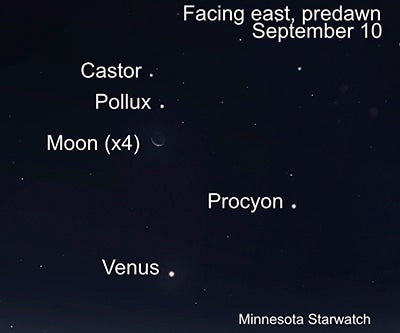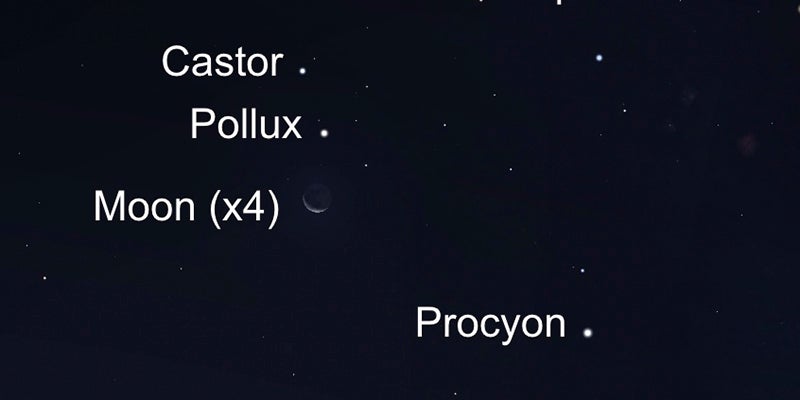Minnesota StarWatch: Fall consolations take to the September skies
Published 6:04 pm Tuesday, August 29, 2023
|
Getting your Trinity Audio player ready...
|
By Deane Morrison
In September, the fall constellations move front and center in the south. They include Aquarius and Pisces, which are famous but dim. On the bright side, this year Jupiter joins Saturn in the evening sky.
Jupiter rises in the east-northeast by 11 p.m. On the 1st, if you want to identify these two planets, a fat waning moon helpfully positions itself midway between Jupiter, to its lower left, and Saturn, to its upper right. On the 26th, a waxing moon hangs below Saturn.
Grab a star chart and look for faint, scraggly Aquarius, Saturn’s current constellation of residence. Also find the Great Square of Pegasus and the Circlet of Pisces, a rather dim ring of stars below and slightly west of the Great Square.

Graphic provided
And don’t forget the Summer Triangle. September is the best time to see these three bright stars, because they now appear high in the south at nightfall. If you have no binoculars, it still should be easy to find the Northern Cross stretching southwestward from Deneb, the star at the Triangle’s northeast corner.
In the predawn sky, Venus appears below the Gemini twins— Castor and Pollux—and Procyon, in Canis Minor, the little dog. A waning moon hangs near Pollux on the 10th, and closer to Venus the next two mornings. Note how Venus, the brightest planet, compares to Sirius, the brightest star. Sirius shines to the right of Venus, and at nearly the same altitude, all month.
The evening of the 28th, the third super moon in a row rises, becoming full at 4:57 a.m. the next morning. As the second full moon in a calendar month, it’s also a blue moon.
Fall arrives with the autumnal equinox at 1:50 a.m. on the 23rd. At that moment the southbound sun officially crosses the equator, and Earth will be lighted from pole to pole.
The University of Minnesota offers public viewings of the night sky at its Duluth and Twin Cities campuses. For more information, see:
• Duluth, Marshall W. Alworth Planetarium: www.d.umn.edu/planet
• Twin Cities, Minnesota Institute for Astrophysics: www.astro.umn.edu/outreach/pubnight
• Check out astronomy programs, free telescope events, and planetarium shows at the University of Minnesota’s Bell Museum: www.bellmuseum.umn.edu/astronomy
• Find U of M astronomers and links to the world of astronomy at: http://www.astro.umn.edu




